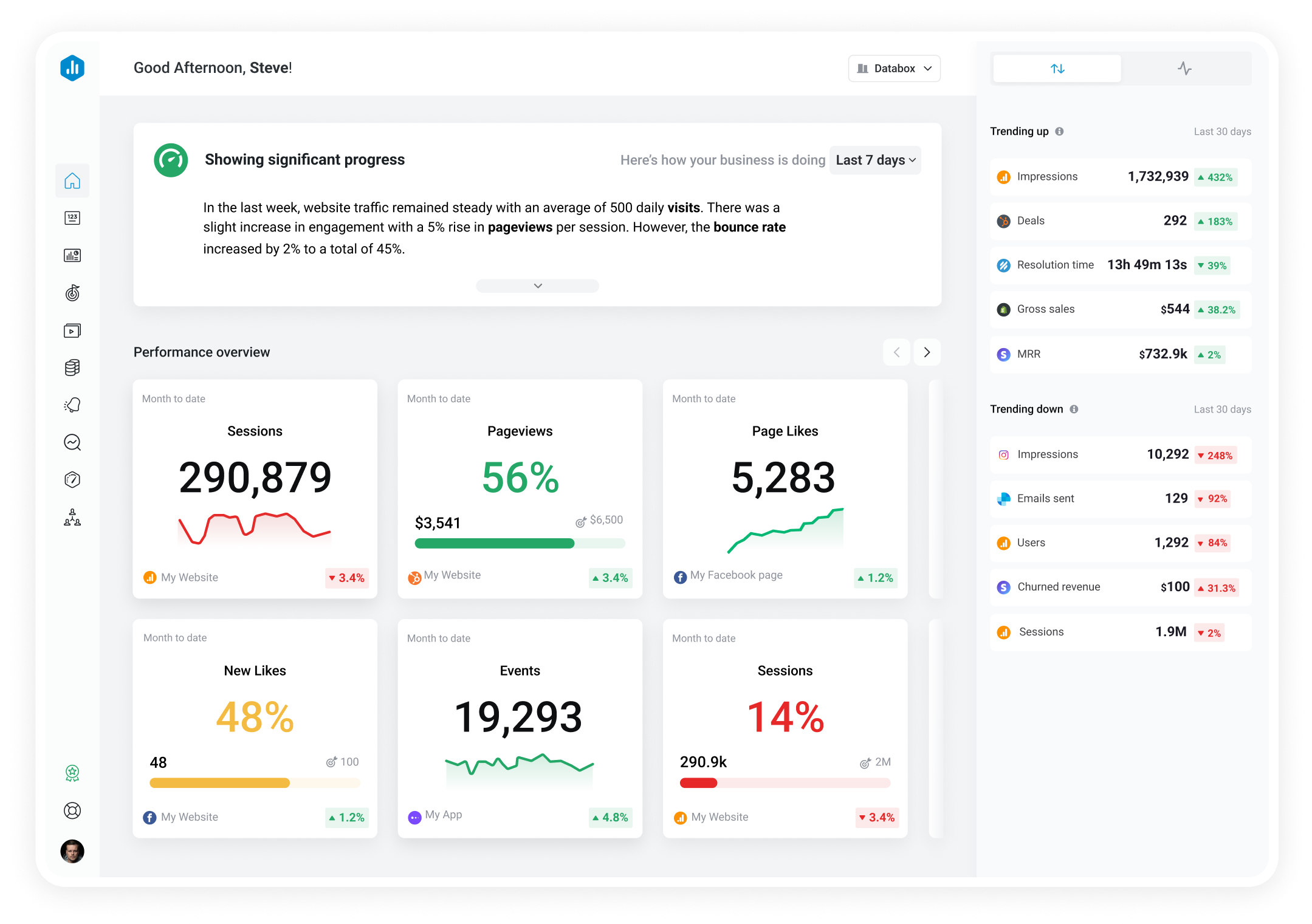Track all of your key business metrics from one screen
GET STARTED
 Xero
Operating Expenses by Subtype
Xero
Operating Expenses by Subtype Operating Expenses by Subtype is a financial metric that categorizes operating expenses by subtype, allowing businesses to track and analyze their expenses by type. This metric helps businesses identify areas where costs can be reduced or optimized, and can be used to create budgets and forecasts.
With Databox you can track all your metrics from various data sources in one place.

Used to show comparisons between values.
Databox is a business analytics software that allows you to track and visualize your most important metrics from any data source in one centralized platform.
To track Operating Expenses by Subtype using Databox, follow these steps:
 Goals
Goals Scorecards
Scorecards Metric Digest
Metric Digest Metric Builder
Metric Builder Data Calculations
Data Calculations Performance Screen
Performance Screen